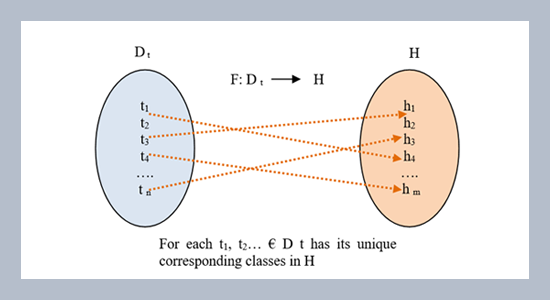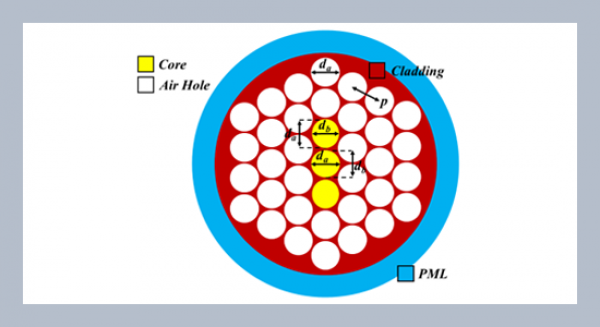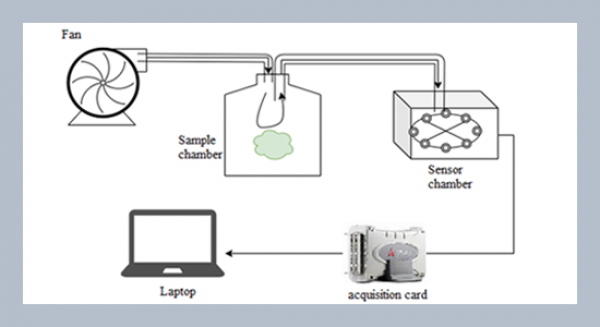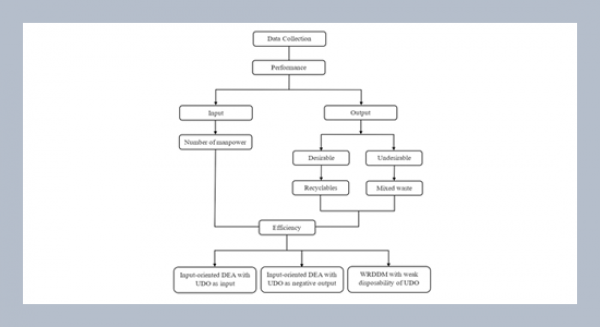REFERENCES
- Bojanowski, P., Grave, E., Joulin, A., Mikolov, T. 2017. Enriching word vectors with subword information. Transactions of the Association for Computational Linguistics, 5, 135–146.
- Chen, J., Huang, H., Tian, S., Qu, Y. 2009. Feature selection for text classification with Naïve Bayes. Expert Systems with Applications, 36, 5432–5435.
- Chen, Y. 2015. Convolutional neural network for sentence classification (Master's thesis, University of Waterloo).
- Cheng, J., Dong, L., Lapata, M. 2016. Long short-term memory-networks for machine reading. arXiv preprint arXiv:1601-06733.
- Collobert, R., Weston, J., Bottou, L., Karlen, M., Kavukcuoglu, K., Kuksa, P. 2011. Natural language processing from scratch. Journal of Machine Learning Research, 12, 2493–2537.
- Devlin, J., Chang, M.W., Lee, K., Toutanova, K. 2018. Bert: Pre-training of deep bidirectional transformers for language understanding.arXiv preprint arXiv:1810–04805.
- Dhuliawala, S., Kanojia, D., Bhattacharyya, P. 2016. Slangnet: A wordnet like resource for english slang. In Proceedings of the Tenth International Conference on Language Resources and Evaluation, 4329–4332.
- Fahad, S.A., Yahya, A.E. 2018. Inflectional review of deep learning on natural language processing. International Conference on Smart Computing and Electronic Enterprise IEEE., 1–4.
- Gupta, G., Malhotra, S. 2015. Text document tokenization for word frequency count using rapid miner. International Journal of Computer Applications, 975, 8887.
- Gupta, V., Lehal, G.S. 2009. A survey of text mining techniques and applications. Journal of Emerging Technologies in Web Intelligence, 1, 60–76.
- Hinton, G.E., Osindero, S., Teh, Y.W. 2006. A fast learning algorithm for deep belief nets. Neural Computation, 18, 1527–1554.
- Joachims, T. 2005. Text categorization with support vector machines: Learning with many relevant features. In Machine Learning: ECML-98: 10th European Conference on Machine Learning Chemnitz, Germany, April 21–23, 1998 Proceedings, 137–142. Berlin, Heidelberg: Springer Berlin Heidelberg.
- Johnson, R., Zhang, T. 2016. Supervised and semi-supervised text categorization using LSTM for region embeddings. In International Conference on Machine Learning PMLR, 526–534.
- Joulin, A., Grave, E., Bojanowski, P., Douze, M., Jégou, H., Mikolov, T. 2016. Fasttext. zip: Compressing text classification models. arXiv preprint arXiv:1612–03651.
- Kaggle, 2021a, https://www.kaggle.com/datasets/yelpdataset.
- Kaggle, 2021b, https://www.kaggle.com/lakshmi25npathi/imdbdataset-of-50k-movie-reviews
- Kalchbrenner, N., Grefenstette, E., Blunsom, P. 2014. A convolutional neural network for modelling sentences. arXiv preprint arXiv:1404–2188.
- Karhunen, J., Raiko, T., Cho, K. ,2015. Unsupervised deep learning: A short review. Advances in independent component analysis and learning machines, 125–142.
- Kim, Y., Jernite, Y., Sontag, D., Rush, A.M. 2016. Character-aware neural language models. In Thirtieth AAAI Conference on Artificial Intelligence.
- Kowsari, K., Brown, D.E., Heidarysafa, M., Meimandi, K.J., Gerber, M.S., Barnes, L.E. 2017. Hdltex: Hierarchical deep learning for text classification. In 16thIEEE International Conference on Machine Learning and Applications IEEE. 364–371.
- Lehmann, J., Isele, R., Jakob, M., Jentzsch, A., Kontokostas, D., Mendes, P.N., Bizer, C. 2015. Dbpedia–a large-scale, multilingual knowledge base extracted from wikipedia. Semantic web, 6, 167–195.
- Liu, P., Qiu, X., Huang, X. 2016. Recurrent neural network for text classification with multi-task learning. arXiv preprint arXiv:1605–05101.
- Liu, X., Shen, Y., Duh, K., Gao, J. 2017. Stochastic answer networks for machine reading comprehension.arXiv preprint arXiv:1712–03556.
- Liu, Y., Sun, C., Lin, L., Wang, X. 2016. Learning natural language inference using bidirectional LSTM model and inner-attention. arXiv preprint arXiv:1605–09090.
- LozaMencía, E., Fürnkranz, J. 2008. Efficient pairwise multilabel classification for large-scale problems in the legal domain. In Joint European Conference on Machine Learning and Knowledge Discovery in Databases 50-65.
- Luštrek, M., Gams, M., Martinčić-Ipšić, S. 2016. What makes classification trees comprehensible. Expert Systems with Applications, 62, 333–346.
- Bijaksana, M.A., Li, Y., Algarni, A. 2013. A pattern based two-stage text classifier. In Machine Learning and Data Mining in Pattern Recognition: 9th International Conference, MLDM, Proceedings 9, 169–182. Springer Berlin Heidelberg.
- Haddoud, M., Mokhtari, A., Lecroq, T., Abdeddaïm, S. 2016. Combining supervised term-weighting metrics for SVM text classification with extended term representation. Knowledge and Information Systems, 49, 909–931.
- Mahto, D., Yadav, S.C. 2022. Hierarchical Bi-LSTM based emotion analysis of textual data.Bulletin of the Polish Academy of Sciences. Technical Sciences,70.
- Manning, C.D., Surdeanu, M., Bauer, J., Finkel, J.R., Bethard, S., McClosky, D. 2014. The Stanford CoreNLP natural language processing toolkit. In Proceedings of 52ndAnnual Meeting of the Association for Computational Linguistics: System Demonstrations, 55–60.
- Mawardi, V.C., Susanto, N., Naga, D.S. 2018. Spelling correction for text documents in Bahasa Indonesia using finite state automata and Levinshtein distance method. In MATEC Web of Conferences, 164, 01047. EDP Sciences.
- Miikkulainen, R., Liang, J., Meyerson, E., Rawal, A., Fink, D., Francon, O., Hodjat, B. 2019. Evolving deep neural networks. InArtificial intelligence in the age of neural networks and brain computing, Academic Press, 293-312.
- Mikolov, T., Chen, K., Corrado, G., Dean, J. 2013. Efficient estimation of word representations in vector space. arXiv preprint arXiv:1301–3781.
- Mikolov, T., Sutskever, I., Chen, K., Corrado, G.S., Dean, J. 2013. Distributed representations of words and phrases and their compositionality. Advances in Neural Information Processing Systems, 26. http://qwone.com/~jason/20Newsgroups/
- Pahwa, B., Taruna, S., Kasliwal, N. 2018. Sentiment analysis-strategy for text pre-processing. International Journal of Computer Applications, 180, 15–18.
- Pennington, J., Socher, R., Manning, C.D. 2014. Glove: Global vectors for word representation. In Proceedings of the 2014 Conference on empirical methods in Natural Language Processing (EMNLP), 1532–1543.
- Prusa, J.D., Khoshgoftaar, T.M. 2016. Designing a better data representation for deep neural networks and text classification. In EEE 17thInternational Conference on Information Reuse and Integration, 411–416.
- Radford, A., Wu, J., Child, R., Luan, D., Amodei, D., Sutskever, I. 2019. Language models are unsupervised multitask learners. OpenAI blog, 1, 9.
- Rajpurkar, P., Jia, R., Liang, P. 2018. Know what you don't know: Unanswerable questions for SQuAD. arXiv preprint arXiv:1806.03822.
- Saif, H., Fernández, M., He, Y., Alani, H. 2014. On stopwords, filtering and data sparsity for sentiment analysis of twitter.
- Sampson, G. 2005. The’LanguageInstinct’Debate: Revised Edition. A&C Black.
- Santos, C.D., Tan, M., Xiang, B., Zhou, B.2016. Attentive pooling networks. arXiv preprint arXiv:1602–03609.
- Sarzynska-Wawer, J., Wawer, A., Pawlak, A., Szymanowska, J., Stefaniak, I., Jarkiewicz, M., Okruszek, L. 2021. Detecting formal thought disorder by deep contextualized word representations.Psychiatry Research,304, 114135.
- Sun, C., Qiu, X., Xu, Y., Huang, X. 2019. How to fine-tune bert for text classification? InChina national conference on Chinese computational linguistics Springer, Cham, 194–206.
- Tai, K.S., Socher, R., Manning, C.D. 2015. Improved semantic representations from tree-structured long short-term memory networks. arXiv preprint arXiv:1503–00075.
- Tang, D., Qin, B., Liu, T. 2015. Document modeling with gated recurrent neural network for sentiment classification. In Proceedings of the 2015 Conference on Empirical Methods in Natural Language Processing, 1422–1432.
- Vaswani, A., Shazeer, N., Parmar, N., Uszkoreit, J., Jones, L., Gomez, A.N., Polosukhin, I. 2017. Attention is all you need. Advances in Neural Information Processing Systems, 30.
- Wang, G., Li, C., Wang, W., Zhang, Y., Shen, D., Zhang, X., Carin, L. 2018. Joint embedding of words and labels for text classification. arXiv preprint arXiv:1805–04174.
- Wang, H., Raj, B.2017. On the origin of deep learning.arXiv preprint arXiv:1702–07800.
- Xie, Q., Dai, Z., Hovy, E., Luong, T., Le, Q. 2020. Unsupervised data augmentation for consistency training.Advances in Neural Information Processing Systems,33, 6256–6268.
- Yang, Y., Pedersen, J.O. 1997. A comparative study on feature selection in text categorization. In Icml, 97, 35.
- Yang, Y., Yih, W.T., Meek, C. 2015. Wikiqa: A challenge dataset for open-domain question answering. In Proceedings of the Conference on Empirical Methods in Natural Language Processing, 2013–2018.
- Yang, Z., Yang, D., Dyer, C., He, X., Smola, A., Hovy, E. 2016. Hierarchical attention networks for document classification. In Proceedings of the Conference of the North American Chapter of the Association for Computational Linguistics: Human Language Technologies, 1480–1489.
- Zhang, X., Zhao, J., LeCun, Y. 2015. Character-level convolutional networks for text classification. Advances in Neural Information Processing Systems, 28.
- Zhou, P., Qi, Z., Zheng, S., Xu, J., Bao, H., Xu, B. 2016. Text classification improved by integrating bidirectional LSTM with two-dimensional max pooling. arXiv preprint arXiv:1611–06639.
- Zhou, X., Wan, X., Xiao, J. 2016. Attention-based LSTM network for cross-lingual sentiment classification. In Proceedings of the Conference on Empirical Methods in Natural Language Processing, 247–256.















